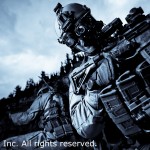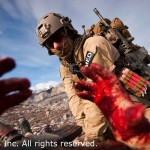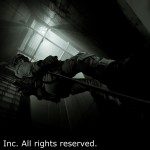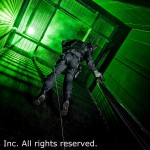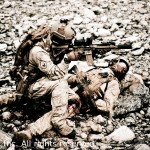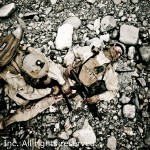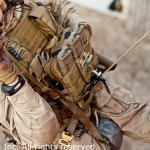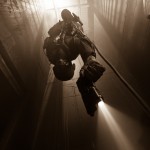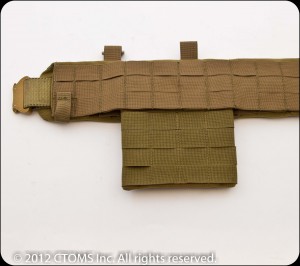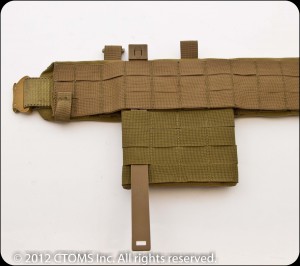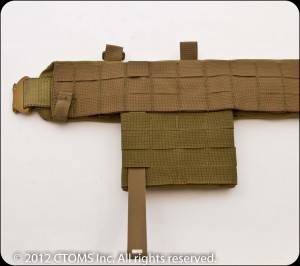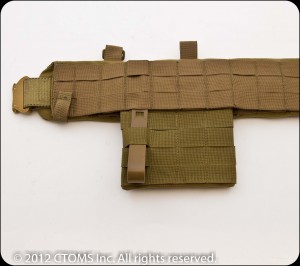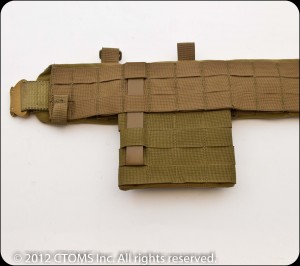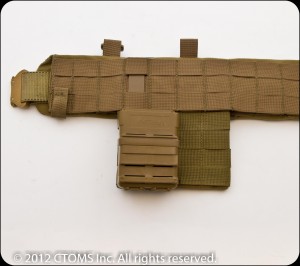February 13, 2012
by craig.keller
0 comments
“If you want to learn something new, read an old book” (Author unknown)
In 1965 Henry K. Silver presented 10 steps that people go through in the evolution of acceptance of a new idea. Different people go through these steps at different speeds. Some may take mere moments to move from one step to another while others may get hung up on individual steps. After the facts are calculated and the risk vs. benefit are weighed, most people meet at the last step.
The Evolution of a New Idea:
- Indignant Rejection
- Reasoned Objection
- Qualified Opposition
- Tentative acceptance
- Qualified Endorsement
- Judicious Modification
- Cautious Adoption
- Impassioned Espousal
- Proud Parenthood
- Dogmatic Propagation
Consider when bullet proof vests were first issued to Law Enforcement Officers. When the idea was first presented, you can bet that it was met with instant indignant rejection. And the justifications and excuses began;
-> “I have been doing this for years and have never been shot at!”
-> “They are too hot, uncomfortable, heavy, bulky…I don’t need one!” And the list goes on.
Today, if you’re Law Enforcement and you don’t have yours at the beginning of your shift, you are sent home.
To be human is to ask why. You name the issue and you’ll see people at different steps progressing through the evolution of a new idea. It’s hard to change ourselves even when we are strongly motivated; though I may want to lose weight, stop smoking or get to the gym more often, it is still a challenging task. Try to change another person’s way of thinking and you’ll experience the challenges it poses. But please don’t give up trying we can all use a different point of view to expose our personal biases and promote self-growth.
Within the military there are branches that are dedicated to documenting lessons learned in the conflicts and then collating, organizing, sharing and disseminating them. One such branch is the Medical Lessons Learned Center. Recorded for our benefit are stories of thousands of voices of the fallen who are begging us to pay attention so we don’t have to relearn the hard way. We live in such a busy world we often don’t take the time to reflect until we are personally affected with loss.
American Civil War 1862
- Dr. David Yandell directed that tourniquets be issued to soldiers.
- During the battle, General Sidney Johnson was shot in his right leg severing his popliteal artery. His boot fills with blood. When asked, “General, are you wounded?” He replied, “Yes, and I fear seriously.” He continued to bleed out and die. A tourniquet was found in his pocket.
World War 1
- A picture is worth a thousand words. Note the date in the photo.

Vietnam
- Over 2500 deaths occurred in Vietnam secondary to hemorrhage from isolated extremity wounds. All potentially preventable with the appropriate and timely use of a tourniquet.
IRAQ
- Marine shot in the leg with femoral bleeding, tourniquet placed late, casualty died.
- If tourniquets are to be effective they must be applied early before the stages of shock progress.
Afghanistan 2002
- Friendly Fire incident Tarnak Farms.
- Improvised tourniquet application and fast evacuation save a Canadian.
- Tourniquets not issued yet, and incorrect tourniquet dogma still accepted.
2008
- Tourniquets Kragh et al Journal of Trauma.
- Iraq, 232 patients with tourniquets on 309 limbs (some patients receiving more than one tourniquet).
- NO AMPUTATIONS FROM TOURNIQUET USE.
- Approximately 3% had transient nerve palsies.
2009
- Tourniquets Kragh et al Annals of Surgery (follow up study).
- 31 Documented lives saved by applying tourniquets pre-hospital rather than in the Emergency Department.
- SOMA vignette presentation where medic spoke of a Marine who kept trying to remove his tourniquet because it was too painful. Upon boarding the MEDEVAC helicopter and the Flight Medic not noticing, the Marine got his wish, removed his tourniquet and bled to death prior to reaching the Medical Treatment Facility.
Present
- Approximately 20% of fatalities in Iraq and Afghanistan have been reported to be potentially preventable (Holcomb 2007, Kelly 2008).
- NO preventable deaths in war to date documented by Rangers and Army SMU in 2009 – these units had been using TCCC from the start in the mid to late 90’s.
This is not meant to be an exhaustive list of examples, but these examples and documents do exist and you probably don’t have to reach that far to find local, regional, national and international cases that identify the specific environment that would support tourniquet use.
A tourniquet is not a new idea, nor is it a delegated medical act requiring a medical director. The Good Samaritan Act covers every first aid course and those courses mention tourniquets as a last resort, and being given more attention recently, most likely due to the military successes. I would argue that if you are a Law Enforcement Officer with an active or Direct Threat still at large and are bleeding out from a gunshot wound that is amenable to tourniquet, you are at your last resort. You have both a tactical problem and a medical problem; you can only focus well on one task at a time. The lesson learned from the military experience is that the tourniquet allows you to do both – control the massive hemorrhage and free your hands to manipulate your firearm, radio, etc.
Within the military’s Special Operations Forces, they cite 4 truths. They are:
- Humans are more important than Hardware.
- Quality is better than Quantity.
- Special Operations Forces cannot be mass produced.
- Competent Special 0perations Forces cannot be created after emergencies occur.
Truth one is that training is more important than equipment. Law Enforcement Officers should be able to feel confident to approach and treat three main potentially preventable causes of death with nothing more than their hands and this can only be accomplished by a specific type of training.
Truth two is summarized best by a quote from a friend, “You can eat soup with a fork, but probably only if you don’t have a spoon.” This means that you can improvise a tourniquet but in reality, only certain commercially available tourniquets have been proven to be 100% successful in a laboratory setting. Would you be willing to trust a non-tested set of handcuffs or pistol? Would you be willing to trust a non-tested or improvised tourniquet on yourself or your partner on an actual massive hemorrhage for the first time?
Bullets don’t listen to our excuses; casualties families don’t listen to our excuses.

You make a difference. Your voice counts. You are the evolution of tactical medicine.
For more information, please click this link.


